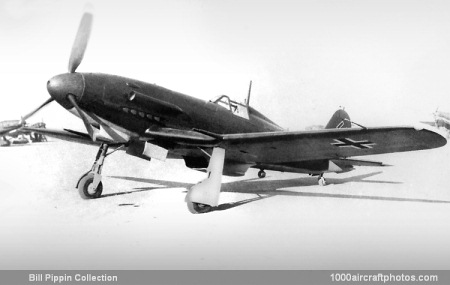Although no major changes were made to the basic structure of the Centauro apart from some strengthening of the engine mounts, the installation of the larger DB 603A engine increased the overall length by some 4.5 in (11.4 cm), and the additional 340 lb (159 kg) weight of the new power plant forward of the center of gravity necessitated some rearrangement of the fighter's equipment to compensate for this. Armament consisted of three 0.787 in (20 mm) Mauser MG 151 cannons and two 0.50 in (12.7 mm) Breda-SAFAT machine guns.
The G.56 was tested by both Italian and German pilots, and in mock dog-fights with the Messerschmitt Bf 109 G and the Focke-Wulf Fw 190 A, it proved itself superior on every count, although maneuverability was slightly inferior to that of the G.55. However, by this stage of the war, the German aero engine industry was finding some difficulty in fulfilling Luftwaffe requirements for the DB 603 engine, and there was little likelihood of any substantial deliveries being made to Italy. In consequence no preparations for the quantity production of the G.56 fighter were initiated, and before prototype trials had been completed, northern Italy had been overrun by the Allies."
